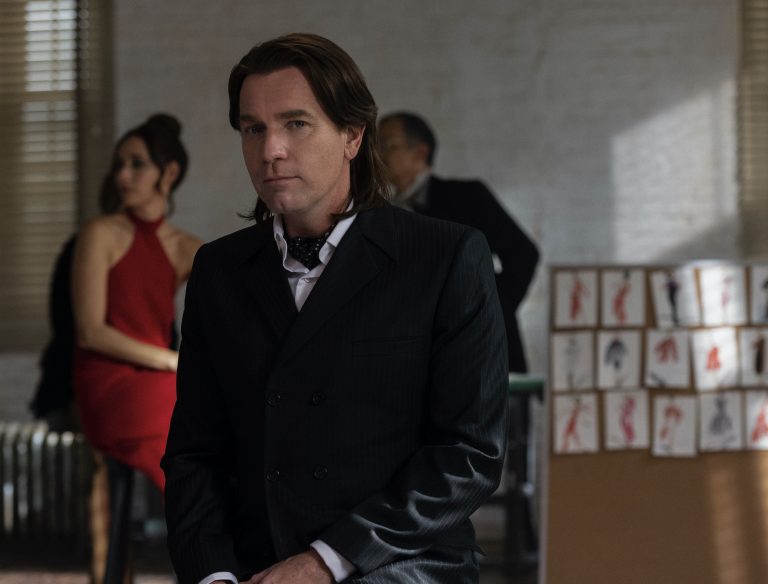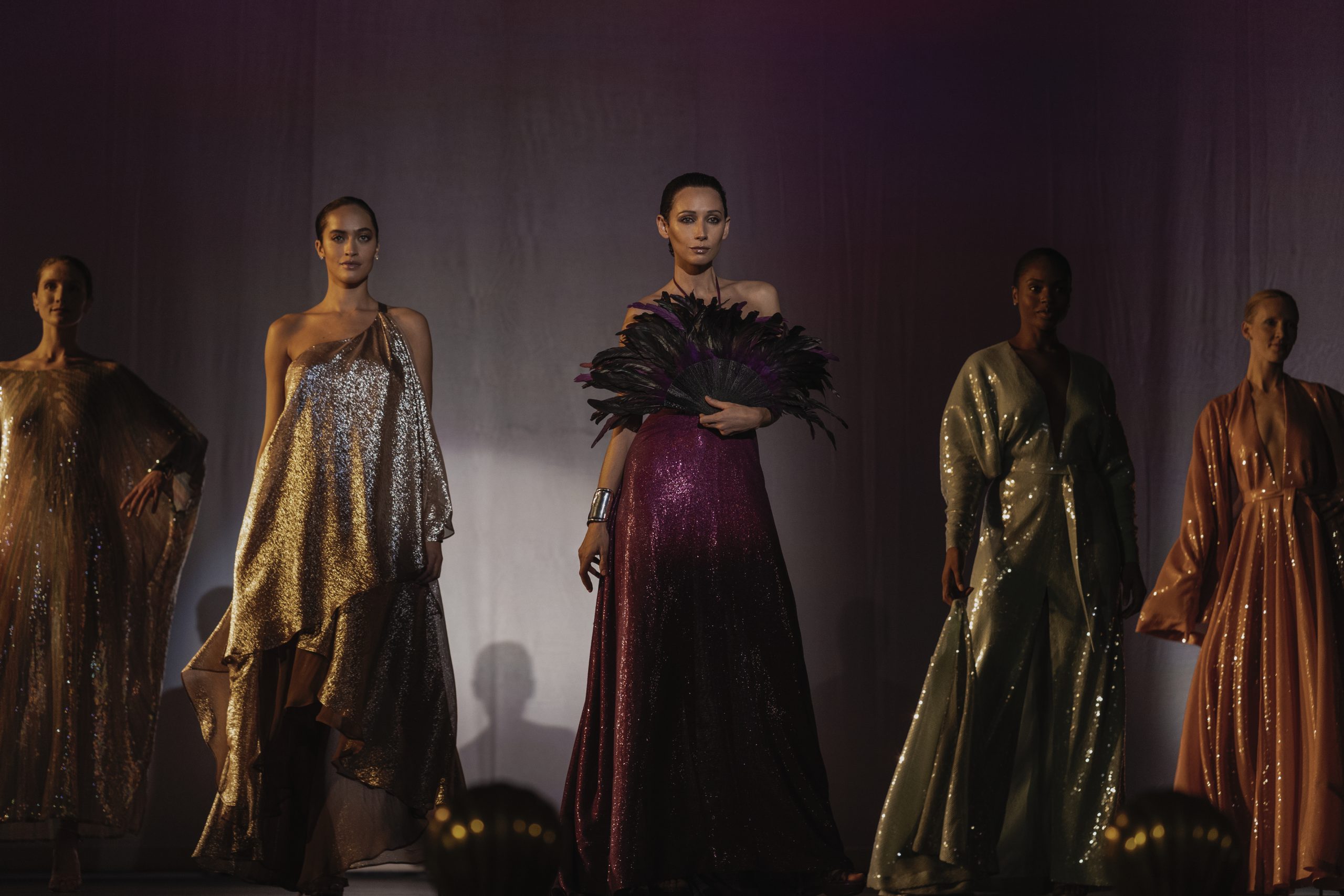
Roy Halston Frowick, simply known as Halston, became a legend in the field of fashion in the United States in the lates 1960s, and rose to international fame in the 1970s. The brand Halston remained a household name — despite the ownership vicissitudes — through the decades, and it continues to be considered one of America’s groundbreaking luxury brands for its minimalistic designs and modern edge choice of fabrics.
Netflix’s eponymous miniseries, based on the life of designer Halston — inspired by Steven Gaines’ book Simply Halston — has Ewan McGregor starring in the titular role. It is directed by Daniel Minahan, who has the most successful television series of our time under his belt, such as Game of Thrones, The Newsroom, True Blood, House of Cards, just to mention a few. His latest work is effective in recreating the atmosphere of the vibrant decades during which Halston worked.
The story begins during the Swinging Sixties, that marked Halston’s first steps from milliner at Bergdorf Goodman (when he became a name for designing the pillbox hat Jacqueline Kennedy wore to the inauguration of her husband), to becoming a well-rounded designer. This is when he started to build up his team with Joe Eula (David Pittu), Elsa Perretti (Rebecca Dayan), and for a short time also Joel Schumacher (Rory Culkin); opening a boutique on Madison Avenue in New York, where the brand focused on ready-to-wear collections. All of this while making a new friend that would have been an important muse and shoulder to lean on throughout his life: Liza Minnelli (Krysta Rodriguez).

At this point we also see some of Halston’s private life, initially with Ed Austin (Sullivan Jones), that he hired as his window dresser, and eventually with Venezuelan-born artist Victor Hugo Rojas (Gian Franco Rodriguez), who was his needy and pushy partner for about a decade.
The story continues with the 1973 historic fashion show — redefined as the event that changed the perception of American couture worldwide. In this occasion five American fashion designers (Oscar de la Renta, Bill Blass, Anne Klein, Stephen Burrows and Halston), gathered at the Palace of Versailles to show against the five French designers considered the best in the world: Yves Saint Laurent, Hubert de Givenchy, Pierre Cardin, Emanuel Ungaro, and Marc Bohan of Christian Dior. At this point in the narrative, Halston is struggling to meet the expectations of his public and of the media. The pressure will plunge him down a rabbit hole of vice and delusion, as he makes a faux pas in terms of business, by signing off his trademark to Norton Simon, Inc., captained by David Mahoney (Bill Pullman), whilst remaining its principal designer. The moment Halston sells his soul to a capitalistic deal, determines his downfall. He loses control of the brand, therefore of his name, and leads a life of excess, absorbed in utter perdition.
However, during this time, the Halston empire will expand: the brand releases its fragrance for women and develops menswear, luggage, handbags, lingerie, bedding, and is even contracted by Braniff International Airways to create a new look for their flight attendants. The miniseries continues with the Eighties, when the Halston label signed a licensing deal with retail chain J. C. Penney, that would give the final blow to the American fashion designer — whose identity was sullied by cheap retail fashion, as opposed to the image of luxury fashion that launched him. The miniseries concludes its journey by showing when Halston’s career and personal life are in a nosedive, but he receives an artistic lifeline from an old friend before embarking on a last creative enterprise.
All in all, the horizontal line of Halston could have been very well compressed in one single movie, since the vertical line of each episode seems excessively stretched out. The historical atmosphere is very palpable and well portrayed by the art department, as well as the costumes. As regards the depiction of the characters of the various eras, several of the illustrious names of the 60s through the 80s, are briefly but effectively presented, from socialite Babe Paley (Regina Schneider), to fashion publicist Eleanor Lambert (Kelly Bishop), as well as revolutionary dancer and choreographer Martha Graham (Mary Beth Peil). The atmosphere of the years of sex, drugs, and rock ’n’ roll are shown through the swashbuckling parties at Studio 54 and the streams of cocaine and alcohol at Halston’s office and home — consumed during fittings and orgies. The icons of the time that we do not meet, are present in mention, as the conversations between Halston and the people around him, bring up the names of Bianca (Jagger) or Andy Warhol.

The acting is superb. Ewan McGregor is sublime in his interpretation of Halston. This role could have become a caricature, but he finds the proper balance to represent the eccentricity of the genius, the frailty of the Indiana boy with a tough upbringing, the capriciousness of the fashion star and the promiscuous raunchiness of the man who later died of AIDS in 1990. The cast around him is spectacular in bringing Halston’s friends and collaborators to life in a multi-faceted way, like the Italian jewellery designer Elsa Perretti, — who made Tiffany & Co.’s pieces legendary — played by the French actress Rebecca Dayan, who is impeccable in coming across as Italian.
Gian Franco Rodriguez, in the role of the hot-headed Victor Hugo, lands his first big role after working on various shorts and makes a remarkable impression. The cast further boasts names that have been featured in blockbuster movies and television series, like David Pittu (King Kong), Bill Pullman (Independence Day), Rory Culkin (Signs), Kelly Bishop (Gilmore Girls), Mary Beth Peil (Dawson’s Creek). But the real revelation of Halston is Krysta Rodriguez, playing Liza Minnelli. Besides looking very similar to the original, her moves and gestures perfectly emulate those of the Cabaret star. Her background in theatre, including Broadway, is evident the first minute we see her, when she magnificently sings and performs a number where she explains her name.
Watching Halston can be an educational journey to get acquainted in a didactic manner with a great icon of American fashion, who drew clients like Greta Garbo, Anjelica Huston, Lauren Bacall and Elizabeth Taylor. The miniseries can be considered Halston’s CliffNotes (American study guides that allow a student to quickly learn the key points of the longer work). But the emotional involvement is weak.
Finale Grade: B-

